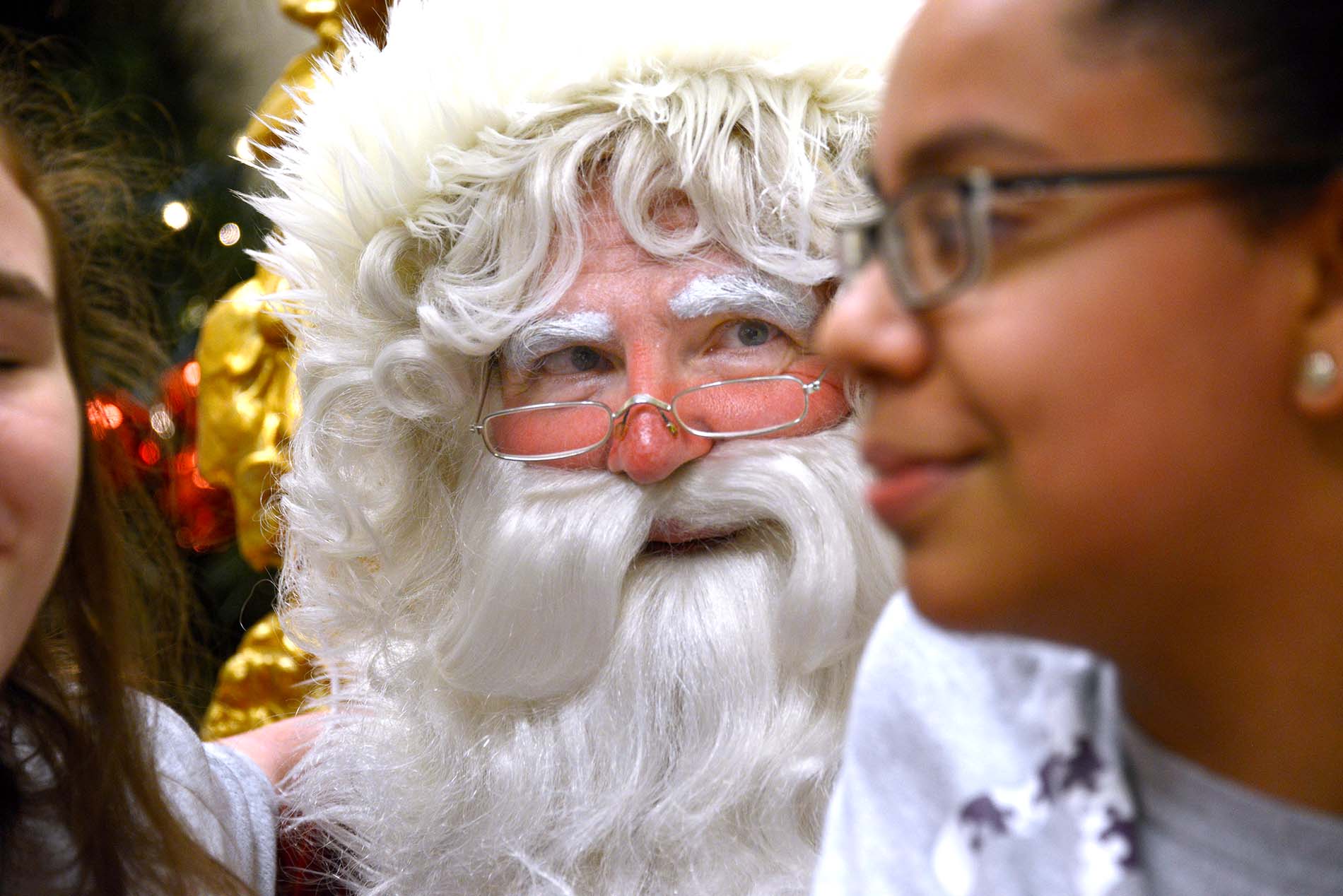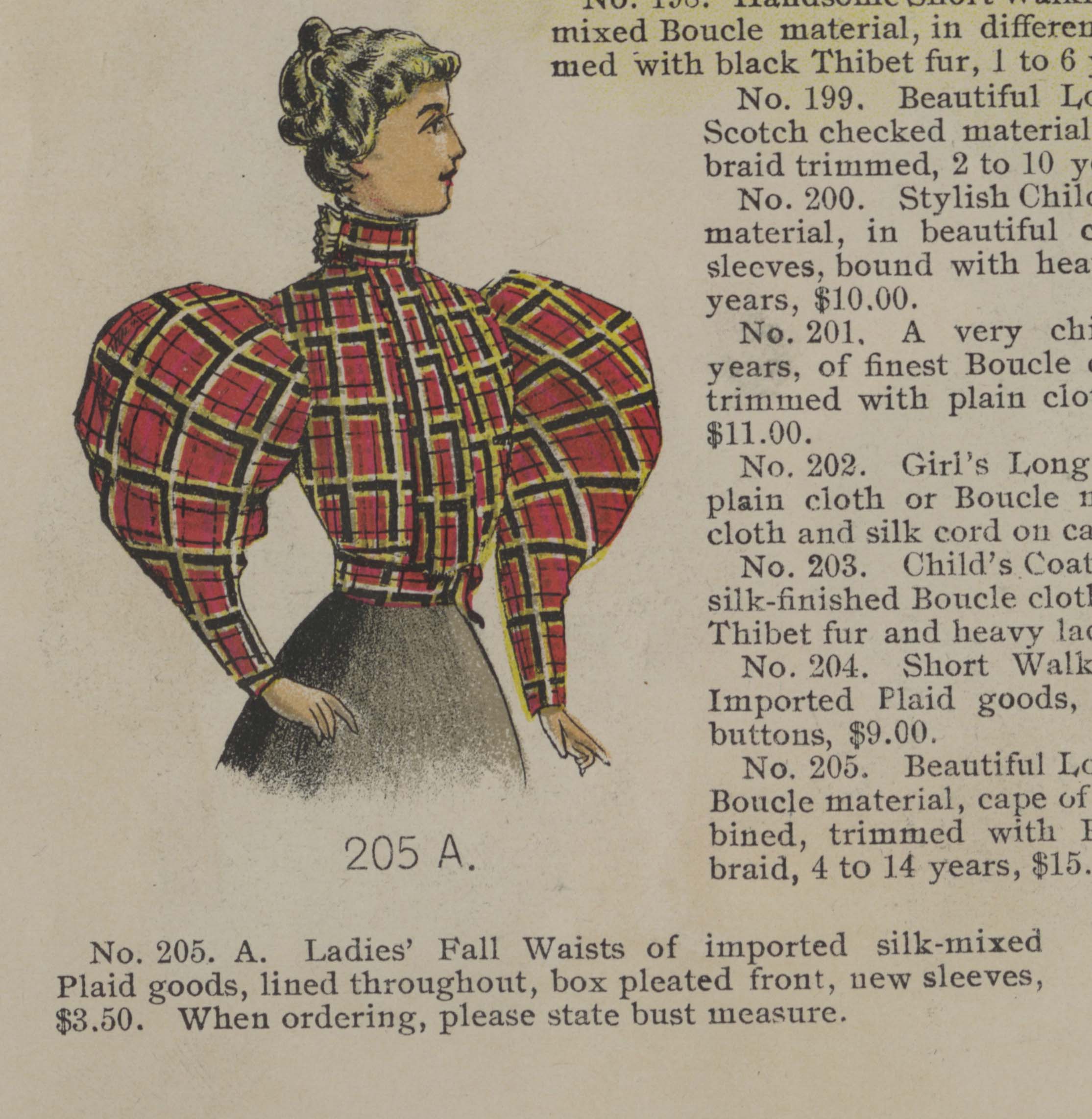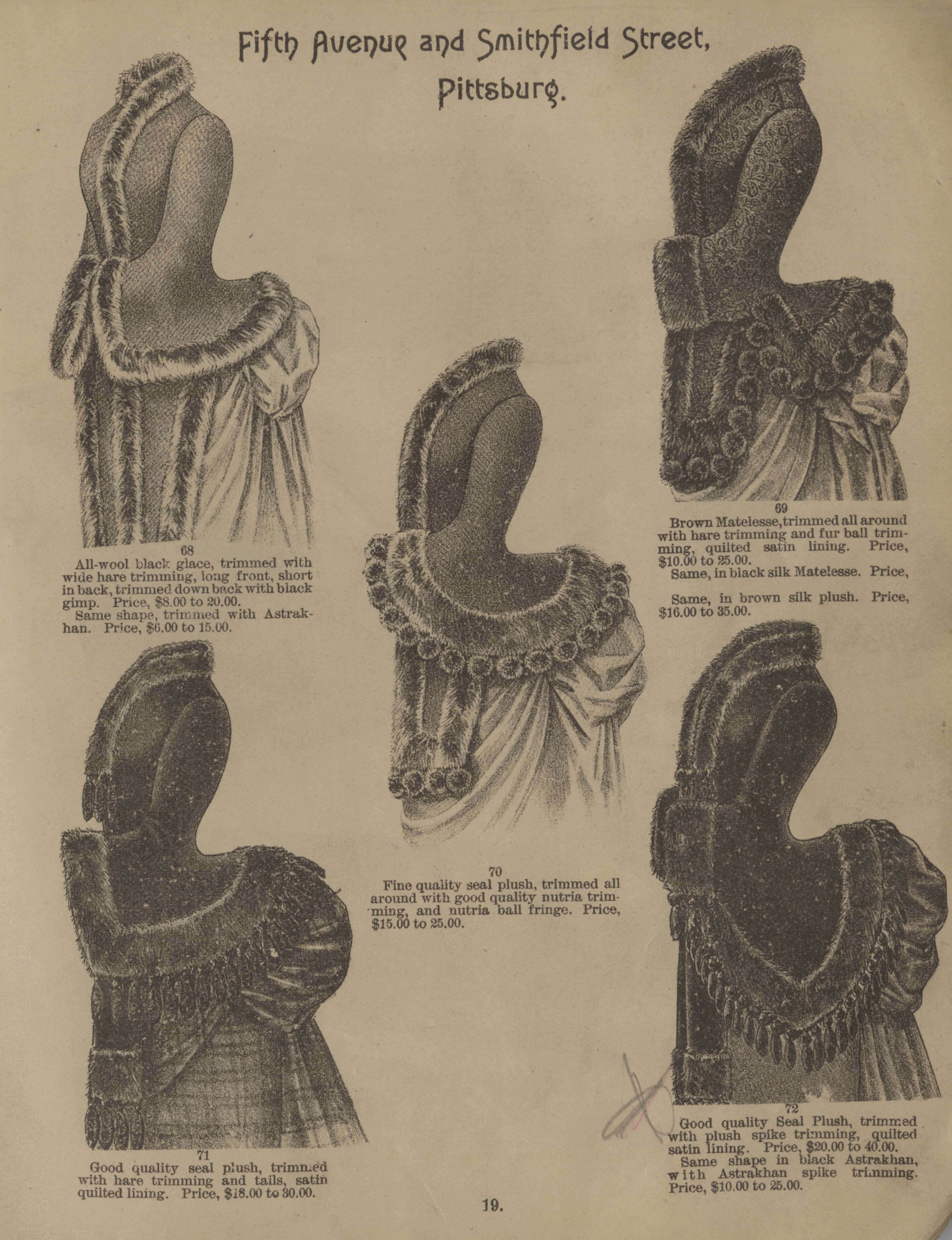By Laura Malt Schneiderman | Pittsburgh Post-Gazette
December 9, 2021
Holiday shopping with the most choices and the highest quality goods used to mean a trip Downtown. There, at one point, 10 or so large department stores plus specialty shops and discounters vied for Western Pennsylvania shoppers’ hard-earned dollars.
Kaufmann’s Christmas Circus: A 1940 recording of ”Kaufmann’s Christmas circus.“ This audio played either in a window display or on radio and seemed to introduce different circus animals to listeners. (George Heid Sr. Sound Recordings, Detre Library & Archives, Heinz History Center)
Now, as an urban-sized Target discount store prepares to open in a corner of the elegant Kaufmann’s department store building on Smithfield Street — a massive structure that has already been converted to include space for apartments and a hotel — memories of breakfasts with Santa and getting a shoeshine near the Fifth Avenue entrance are starting to fade.
Robert Jamison of Etna as Santa Claus listens to the wish list of seventh-grader Olivia Allen in 2015 at the last Downtown department store Santaland. That year, Santaland moved out of the Downtown Macy’s and into One Oxford Centre. (Darrell Sapp/Post-Gazette)

Robert Jamison of Etna as Santa Claus listens to the wish list of seventh-grader Olivia Allen in 2015 at the last Downtown department store Santaland. That year, Santaland moved out of the Downtown Macy’s and into One Oxford Centre. (Darrell Sapp/Post-Gazette)
But the department stores have left their mark on the Pittsburgh landscape, with massive buildings still standing as an ode to a different time, when fortunes were made selling gloves and ready-to-wear dresses and the grander the structures, the more customers liked being there.
Downtown Pittsburgh as a shopping destination started humbly enough with a store called Perkins — the city’s first department store, according to a Sept. 26, 1936, article in the Post-Gazette.

A drawing of Perkins’ department store that appeared Sept. 26, 1936, in the Post-Gazette. (Post-Gazette Archives)
Thomas Perkins, a traveling watch and clock repairer, had opened a store at the Point, address unknown, shortly after 1800. It sold fabrics, sewing supplies and even photographic daguerreotype portraits. “Pittsburgh’s gay young blades and their sweethearts considered it great sport Saturday afternoons to swagger in and have a picture made,” according to the PG article. The shop burned down in the 1845 city fire.
From the ashes grew a different type of store that would eventually lead to the heyday of Downtown shopping as entrepreneurs of the day started small and over the decades added more space, more goods, more pizzazz. The era of the block-long, multi-story department stores began with something much smaller: tiny “dry goods” shops often owned by immigrants who sold fabric, sewing supplies called “notions” and a selection of other items including ready-to-wear men’s clothing, which had been mass produced as early as 1812.

A late 19th-century advertisement of a shirtwaist from Kaufmann Brothers. (Heinz History Center)
In Pittsburgh, these tiny establishments (the first Kaufmann’s store had dimensions of roughly 17 by 28 feet, or about 476 square feet and perhaps the volume of a tractor-trailer) dotted the increasingly industrial city’s main streets and especially Market Street in Downtown.
The rise of machine manufacturing in the 1800s allowed goods that used to be made laboriously by hand, like clothing, to be mass produced faster and more cheaply. Industrialization also induced many people to leave their countryside farms and take manufacturing jobs in urban centers like Pittsburgh. Though the work was dirty and dangerous, the hours long and the wages low, for many people these jobs still represented an improvement on income before industrialization.
A page from a Kaufmann Brothers advertising booklet from the late 19th century shows ready-made women’s clothing. (Heinz History Center)

A page from a Kaufmann Brothers advertising booklet from the late 19th century shows ready-made women’s clothing. (Heinz History Center)
In the 1870s, production of women’s ready-to-wear clothing picked up, starting with the high-necked, long-sleeved blouses called shirtwaists. Advertisements for women’s ready-made shirtwaists begin to appear as early as July 1872, as evidenced by an edition of the Cincinnati Enquirer posted on archival site Newspapers.com.
Toyland in wartime: This undated recording probably accompanied Kaufmann’s 1941 “Toyland Prepares for Defense” Christmas window theme. (George Heid Sr. Sound Recordings, Detre Library & Archives, Heinz History Center)
Stores, eager to expand their offerings and to appeal to female shoppers, began stocking the ready-to-wear clothing. A May 16, 1885, advertisement for Kaufmann’s proclaimed that store had begun stocking shirtwaists. Nationally, the number of female sales clerks went from 8,000 in 1880 to 58,000 in 1890, according to historian Vicki Howard in her book “From Main Street to Mall: The Rise and Fall of the American Department Store.”

